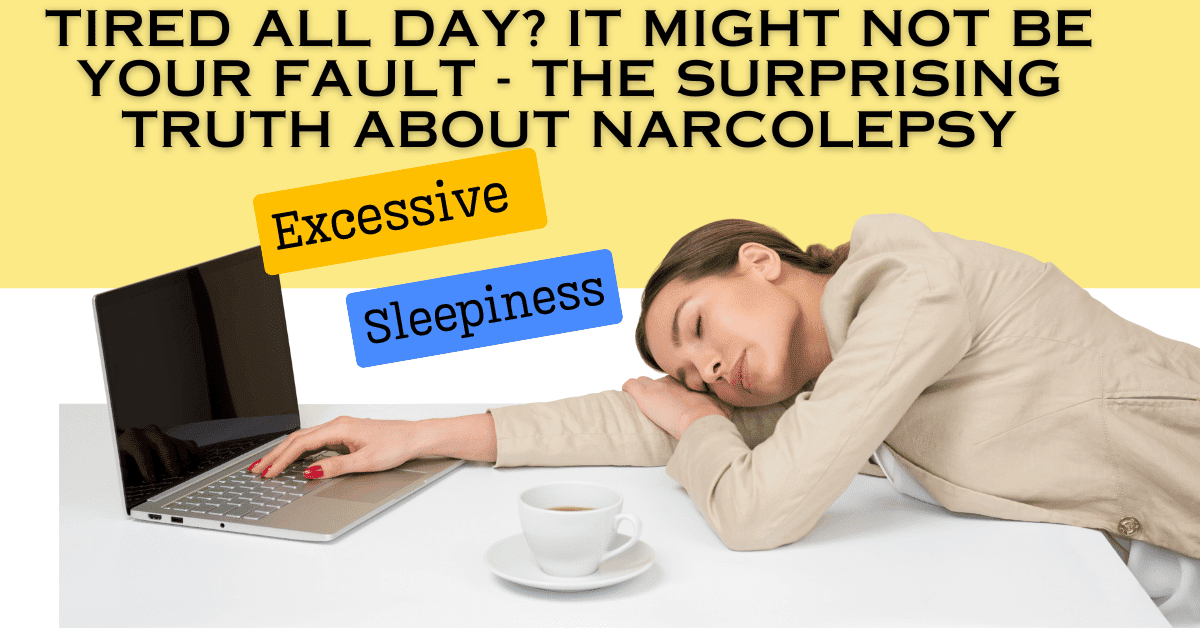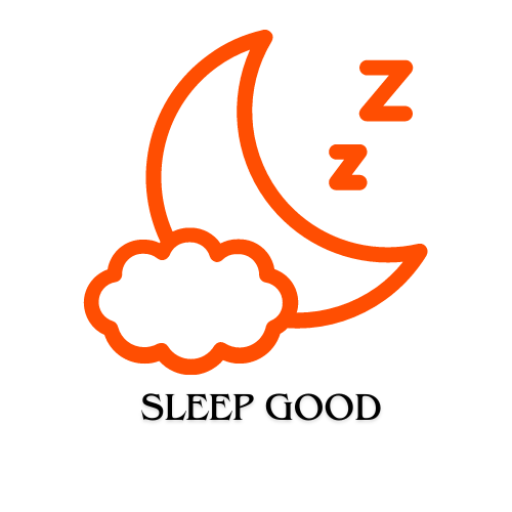
Table of Contents
Understanding Narcolepsy: Symptoms, Causes, Diagnosis, and Treatment
I. Introduction to Narcolepsy
Narcolepsy is a chronic neurological disorder that disrupts the brain’s ability to control sleep-wake cycles. People with narcolepsy experience excessive daytime sleepiness and may fall asleep at inappropriate times, such as while working, eating, or even driving. This condition affects approximately 1 in 2,000 people in the United States, yet it remains largely misunderstood and underdiagnosed.
Problem: Narcolepsy can have a devastating impact on a person’s quality of life, affecting their ability to work, study, and maintain relationships. Many individuals with narcolepsy struggle for years before receiving a proper diagnosis, often facing misunderstanding and stigma along the way.
Agitation: The consequences of undiagnosed or untreated narcolepsy can be severe. Imagine losing your job because you can’t stay awake during meetings, or having to give up driving due to the fear of falling asleep at the wheel. These are real challenges faced by people with narcolepsy every day.
Solution: While there is no cure for narcolepsy, proper diagnosis and treatment can significantly improve a person’s quality of life. By understanding the symptoms, causes, and available treatments, individuals with narcolepsy can regain control over their lives and manage their condition effectively.
II. Types and Forms of Narcolepsy
Narcolepsy is not a one-size-fits-all condition. There are different types and forms of the disorder, each with its own characteristics:
A. Narcolepsy Type 1 (with cataplexy)
Narcolepsy Type 1, also known as narcolepsy with cataplexy, is characterized by excessive daytime sleepiness and sudden loss of muscle tone (cataplexy) triggered by strong emotions. This form of narcolepsy is associated with a deficiency in hypocretin, a neurotransmitter that regulates wakefulness.
B. Narcolepsy Type 2 (without cataplexy)
Narcolepsy Type 2, or narcolepsy without cataplexy, shares many symptoms with Type 1 but does not involve cataplexy. People with Type 2 narcolepsy may have normal levels of hypocretin.
C. Other forms of narcolepsy
While Types 1 and 2 are the most common forms of narcolepsy, researchers have identified other, rarer forms of the condition, such as secondary narcolepsy caused by brain injuries or tumors.
III. Signs and Symptoms of Narcolepsy
Recognizing the signs and symptoms of narcolepsy is crucial for early diagnosis and treatment. The primary symptoms of narcolepsy are often referred to as the “narcolepsy tetrad”:
- Excessive daytime sleepiness (EDS): An overwhelming urge to sleep during the day, even after a full night’s rest.
- Cataplexy: Sudden loss of muscle tone triggered by strong emotions, often laughter or anger.
- Sleep paralysis: Temporary inability to move or speak while falling asleep or waking up.
- Hypnagogic hallucinations: Vivid, often frightening hallucinations that occur while falling asleep or waking up.
Not all individuals with narcolepsy experience all four symptoms, and the severity can vary greatly from person to person.
How to recognize narcolepsy
Identifying narcolepsy can be challenging, as some symptoms may be mistaken for laziness or other sleep disorders. Here are some key indicators:
- Falling asleep suddenly during daily activities
- Experiencing “sleep attacks” that last for a few seconds to several minutes
- Feeling refreshed after a short nap, only to feel sleepy again hours later
- Difficulty concentrating and memory problems
- Automatic behaviors (performing tasks without awareness or memory)
Narcolepsy with cataplexy
Cataplexy is a unique symptom that sets Type 1 narcolepsy apart. It involves a sudden, temporary loss of muscle control triggered by strong emotions. Cataplexy can range from mild (such as drooping eyelids) to severe (complete body collapse).
“Living with cataplexy is like walking on eggshells with your emotions. You never know when a laugh or moment of excitement might cause you to collapse.” – Sarah, narcolepsy patient
IV. Causes and Nature of Narcolepsy
Understanding the causes of narcolepsy is an ongoing area of research. While the exact mechanisms are not fully understood, several factors have been identified:
A. Narcolepsy reasons
The primary cause of narcolepsy Type 1 is a deficiency in hypocretin (also known as orexin), a neurotransmitter that regulates wakefulness and REM sleep. In individuals with Type 1 narcolepsy, the neurons that produce hypocretin are damaged or destroyed.
B. Genetic factors
Narcolepsy has a genetic component, but it’s not a simple hereditary condition. Research has shown that:
- Is narcolepsy inherited? While narcolepsy can run in families, it’s not directly inherited in most cases.
- Is narcolepsy hereditary? The risk of narcolepsy is higher in first-degree relatives of narcolepsy patients, but it’s not a guarantee.
- Is narcolepsy genetic? Certain genetic variations, particularly in the HLA-DQB1*06:02 gene, are associated with an increased risk of narcolepsy.
C. Other potential causes
Other factors that may contribute to the development of narcolepsy include:
- Autoimmune disorders
- Hormonal changes
- Stress
- Infections
- Traumatic brain injuries
V. Diagnosis and Testing for Narcolepsy
Diagnosing narcolepsy can be a complex process, often involving multiple tests and evaluations.
A. Diagnostic process
The journey to a narcolepsy diagnosis typically involves:
- Medical history review
- Physical examination
- Sleep studies
- Specialized tests
B. Types of tests for narcolepsy
Key diagnostic tools for narcolepsy include:
- Polysomnography (PSG): An overnight sleep study that monitors brain waves, eye movements, muscle activity, and other bodily functions during sleep.
- Multiple Sleep Latency Test (MSLT): A daytime test that measures how quickly a person falls asleep and enters REM sleep over a series of short naps.
- Hypocretin level measurement: A lumbar puncture to measure hypocretin levels in cerebrospinal fluid (primarily used for research purposes).
C. Challenges in diagnosing narcolepsy
Diagnosing narcolepsy can be challenging due to:
- Overlap of symptoms with other conditions
- Variability in symptom presentation
- Lack of awareness among healthcare providers
VI. Treatment and Medication for Narcolepsy
While there is no cure for narcolepsy, various treatments can help manage symptoms and improve quality of life.
A. Overview of narcolepsy treatments
Treatment for narcolepsy typically involves a combination of:
- Medications
- Lifestyle changes
- Behavioral therapies
B. Medications for narcolepsy
| Medication | Primary Use |
| Stimulants | Excessive daytime sleepiness |
| Sodium oxybate | EDS and cataplexy |
| Antidepressants | Cataplexy, sleep paralysis |
| Wake-promoting agents | Excessive daytime sleepiness |
C. Non-pharmacological therapies for narcolepsy
In addition to medications, several non-pharmacological approaches can help manage narcolepsy:
- Scheduled naps
- Sleep hygiene improvements
- Regular exercise
- Cognitive Behavioral Therapy (CBT)
- Support groups
D. Managing narcolepsy prescriptions
Effective management of narcolepsy often requires careful coordination of medications. Patients should work closely with their healthcare providers to:
- Find the right combination of medications
- Adjust dosages as needed
- Monitor for side effects
- Ensure safe use of prescribed drugs
VII. Related Conditions and Differential Diagnosis
Narcolepsy can sometimes be confused with or occur alongside other conditions.
A. Narcolepsy and ADHD
Attention Deficit Hyperactivity Disorder (ADHD) and narcolepsy share some symptoms, such as difficulty concentrating and memory problems. Some individuals may be misdiagnosed with ADHD when they actually have narcolepsy, or they may have both conditions concurrently.
B. Narcolepsy vs. Hypersomnia
Idiopathic hypersomnia is another sleep disorder characterized by excessive daytime sleepiness. While it shares this symptom with narcolepsy, there are key differences:
- Narcolepsy often involves disrupted nighttime sleep, while those with hypersomnia typically sleep well at night.
- Cataplexy is unique to narcolepsy Type 1 and is not present in hypersomnia.
- People with hypersomnia often have difficulty waking up and may feel groggy for extended periods (sleep inertia).
C. Other sleep disorders
Other conditions that may be confused with narcolepsy include:
- Sleep apnea
- Chronic fatigue syndrome
- Depression
- Kleine-Levin syndrome
Proper diagnosis is crucial for effective treatment, which is why a comprehensive sleep evaluation is essential.
VIII. Living with Narcolepsy
Managing narcolepsy extends beyond medical treatment. It often requires significant lifestyle adjustments and coping strategies.
A. Coping strategies
People with narcolepsy can employ various strategies to manage their symptoms:
- Scheduled naps: Taking brief, planned naps during the day can help manage sleepiness.
- Sleep hygiene: Maintaining a consistent sleep schedule and creating a sleep-friendly environment.
- Stress management: Techniques like meditation or yoga can help reduce stress-triggered symptoms.
- Avoiding triggers: Identifying and avoiding emotional triggers for cataplexy.
B. Lifestyle adjustments
Living with narcolepsy often requires adjustments in various aspects of life:
- Work accommodations: Flexible schedules, opportunities for naps, or remote work options.
- Educational support: Working with schools to develop appropriate accommodations.
- Driving safety: Some individuals may need to limit or avoid driving.
- Relationship communication: Educating partners, family, and friends about narcolepsy.
C. Support and resources
Support is crucial for individuals living with narcolepsy. Resources include:
- Support groups (online and in-person)
- Patient advocacy organizations
- Educational materials for family and friends
- Occupational therapy services
IX. Conclusion
Narcolepsy is a complex neurological disorder that can significantly impact a person’s quality of life. However, with proper diagnosis, treatment, and management strategies, individuals with narcolepsy can lead fulfilling lives.
Key takeaways:
- Narcolepsy is a chronic neurological disorder affecting sleep-wake cycles.
- There are different types of narcolepsy, with Type 1 (with cataplexy) being the most well-known.
- Symptoms include excessive daytime sleepiness, cataplexy, sleep paralysis, and hypnagogic hallucinations.
- Diagnosis involves sleep studies and careful evaluation of symptoms.
- Treatment typically includes a combination of medications and lifestyle adjustments.
- With proper management, individuals with narcolepsy can improve their quality of life significantly.
As research continues, our understanding of narcolepsy grows, offering hope for better treatments and possibly even a cure in the future. For now, raising awareness, promoting early diagnosis, and supporting those living with narcolepsy are crucial steps in addressing this challenging condition.
FAQ
- Q: Can narcolepsy be cured? A: Currently, there is no cure for narcolepsy. However, symptoms can be managed effectively with proper treatment and lifestyle adjustments.
- Q: Is narcolepsy a form of epilepsy? A: No, narcolepsy is not a form of epilepsy. While both are neurological disorders, they affect the brain in different ways and have distinct symptoms.
- Q: Can people with narcolepsy drive? A: Driving with narcolepsy can be dangerous due to the risk of falling asleep at the wheel. Some individuals may be able to drive safely with proper treatment and precautions, but others may need to avoid driving altogether. It’s important to discuss this with a healthcare provider.
- Q: How common is narcolepsy? A: Narcolepsy affects approximately 1 in 2,000 people in the United States, though it is believed to be underdiagnosed.
- Q: Can children develop narcolepsy? A: Yes, narcolepsy can develop at any age, including in children. However, it often goes undiagnosed in younger individuals due to lack of awareness and overlap with other conditions.
By understanding narcolepsy better, we can work towards earlier diagnosis, more effective treatments, and greater support for those living with this challenging condition. If you suspect you or someone you know may have narcolepsy, don’t hesitate to seek medical advice. With proper care and management, it’s possible to regain control and lead a fulfilling life despite narcolepsy.
References
Here are some relevant research papers that can provide scientific backing for the information in the article:
A study highlighting the challenges in diagnosing narcolepsy and its impact on patients’ lives.
This comprehensive review covers the clinical aspects, causes, diagnosis, and treatment of narcolepsy.
Scammell, T. E. (2015). Narcolepsy. New England Journal of Medicine, 373(27), 2654-2662.
An overview of narcolepsy, including its neurobiological basis and treatment options.
Miyagawa, T., & Tokunaga, K. (2019). Genetics of narcolepsy. Human Genome Variation, 6(1), 1-7.
This paper discusses the genetic factors associated with narcolepsy.
Maski, K., Steinhart, E., Williams, S., Scammell, T., Flygare, J., McCleary, K., & Gow, M. (2017). Listening to the patient voice in narcolepsy: diagnostic delay, disease burden, and treatment efficacy. Journal of Clinical Sleep Medicine, 13(3), 419-425.
